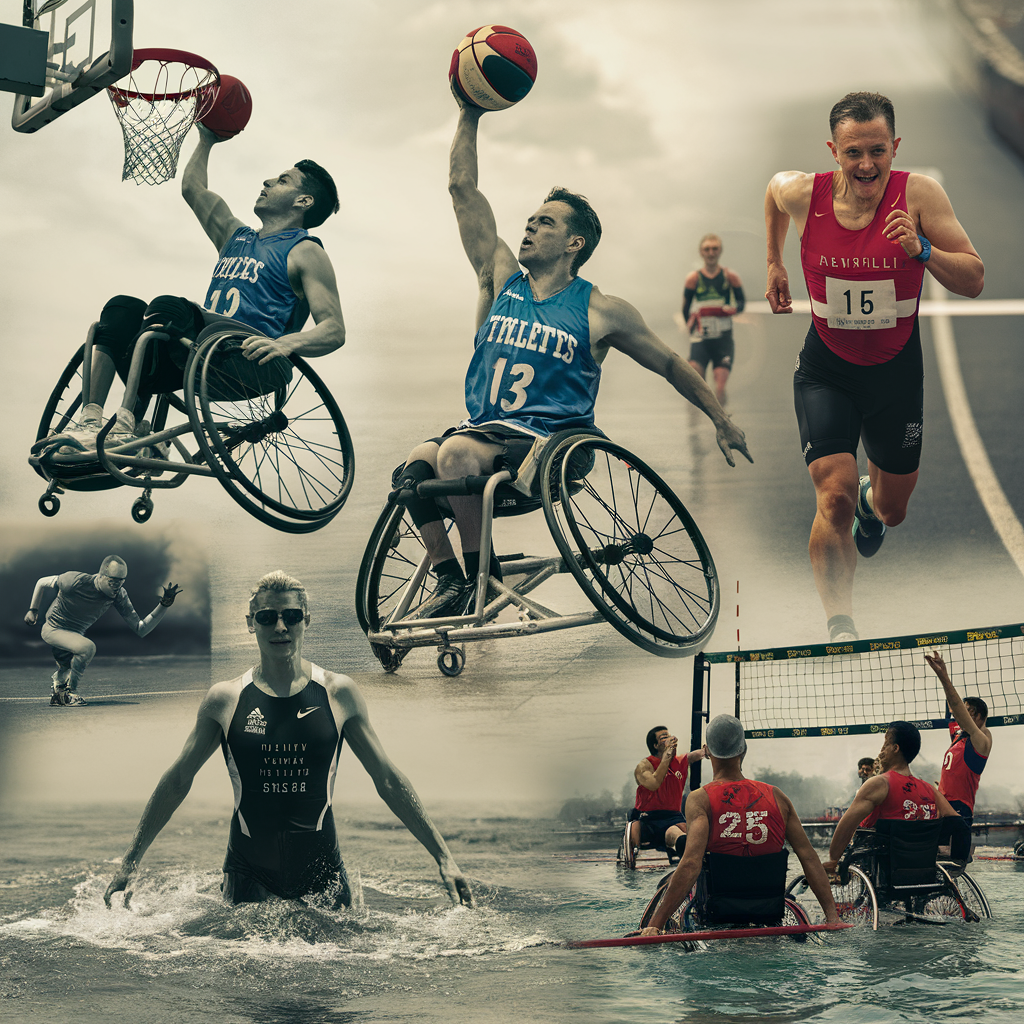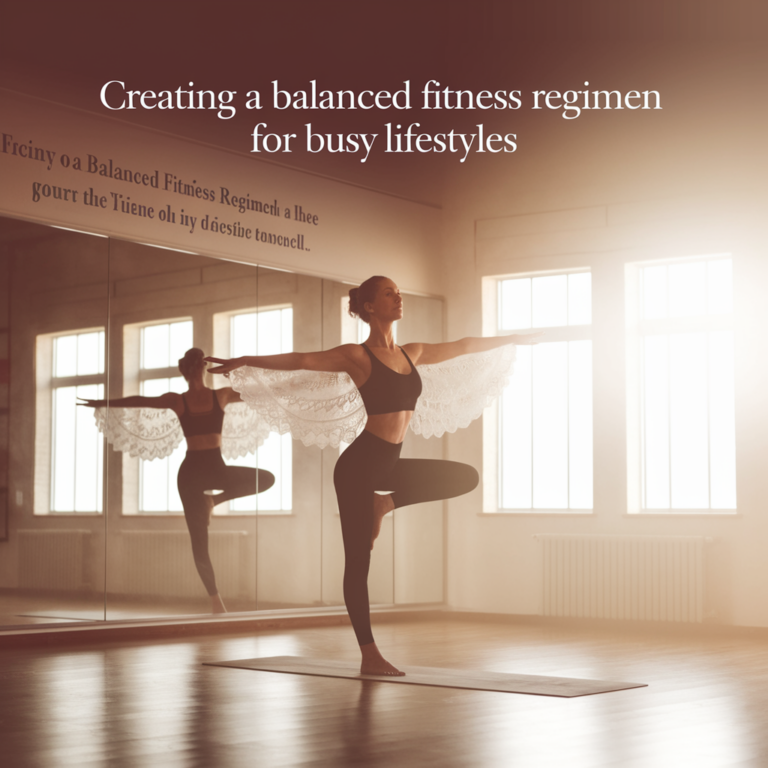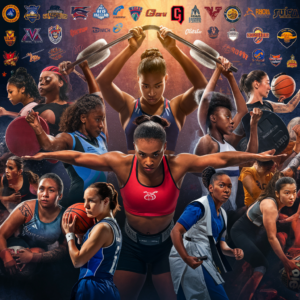Breaking Down Barriers: Adaptive Sports for All
As I sat on the sidelines of a local adaptive basketball game, I couldn’t help but feel a wave of excitement wash over me. The energy was palpable, the laughter infectious, and the sheer determination of the athletes was nothing short of inspiring. It struck me that while sports have always been a frontier for personal achievement and community bonding, adaptive sports uniquely embody the spirit of inclusivity. They break down barriers that society has long imposed, opening doors for all individuals, regardless of their physical abilities.
Adaptive sports, often referred to as disability sports, are designed to allow athletes with disabilities to compete in sports. These activities are not merely about participation; they are about empowerment, resilience, and redefining what it means to be an athlete. From wheelchair basketball to blind soccer, the range of adaptive sports is as varied as the athletes who participate in them. The question that often arises, though, is: how do these sports truly break down barriers?
The Power of Inclusion
Inclusion is a powerful concept. It’s about more than simply allowing individuals with disabilities to participate in sports; it’s about embracing the idea that everyone, regardless of their circumstances, deserves a chance to compete. In recent years, society has made significant strides toward inclusivity, but adaptive sports have been at the forefront of this movement. They provide a platform for athletes to showcase their talents, challenge stereotypes, and inspire others.
Consider the case of the U.S. Paralympic basketball team. This remarkable group of athletes has not only claimed numerous gold medals but has also shattered misconceptions about what disabled athletes can achieve. I remember a poignant moment during the last Paralympics when a player, after making an incredible shot, turned to the crowd and shouted, “This is what we do!” It was a declaration that resonated with everyone present, reminding us that success comes in many forms.
Accessibility: The Key Ingredient
Accessibility, in the context of adaptive sports, is crucial. It’s not just about having the right equipment—though that’s important too—but also about creating environments where athletes can train and compete without barriers. Many communities are now investing in accessible facilities, ensuring that everyone can participate. This involves everything from wheelchair ramps to specialized training programs that cater to various disabilities.
One shining example of this is the rise of community-based adaptive sports programs. These initiatives often emerge from grassroots efforts, with local volunteers working tirelessly to ensure that everyone has access to sports. Take, for instance, the “Challenged Athletes Foundation,” which has successfully funded numerous adaptive sports programs across the country, enabling countless individuals to engage in sports they love. Their motto, “The power of sport is for everyone,” encapsulates the essence of the movement.
Real Stories, Real Impact
Nothing illustrates the impact of adaptive sports quite like the stories of the athletes themselves. Take the inspiring journey of Jessica, a young woman who lost her leg in a car accident. Initially devastated, she found solace in adaptive skiing, which not only helped her regain her confidence but also led her to compete at the national level. “It changed my life,” she told me during an interview. “Skiing gave me a new identity and a community that understood me.”
Then there’s Marcus, a former college football player who became a paraplegic after an injury on the field. He transitioned to wheelchair rugby, where he discovered a new passion and camaraderie. “It’s intense,” he laughed, “but it’s also incredibly freeing. I can still compete and push myself to the limit.” His story is a testament to the transformative power of adaptive sports, showing that while challenges exist, so too do opportunities for growth.
The Role of Technology
Technology plays a pivotal role in the evolution of adaptive sports. Innovative advancements in equipment design have revolutionized how athletes with disabilities train and compete. For instance, the development of lightweight wheelchairs has made a significant difference in sports like basketball and racing. These chairs are engineered for speed and agility, allowing athletes to perform at their best.
Moreover, specialized prosthetics have opened up new avenues for athletes in various sports. From running to swimming, these devices are engineered to enhance performance and provide athletes with the competitive edge they need. It’s fascinating to observe how technology, when thoughtfully applied, can erase some of the limitations faced by athletes with disabilities.
Education and Awareness
Education is another essential component in breaking down barriers. Many misunderstandings about disabilities stem from a lack of awareness and exposure. Initiatives aimed at educating the public about adaptive sports can foster a greater appreciation for the athletes and the challenges they overcome. Programs in schools that integrate adaptive sports into their physical education curriculum can help normalize the presence of athletes with disabilities.
One initiative that stands out is the “Adaptive Sports Education Program.” This initiative brings athletes into schools to share their stories and demonstrate their sports. Watching a professional athlete take a shot on a basketball court, or sprint in a racing wheelchair, leaves a lasting impression on students. It sends a powerful message: anyone can achieve greatness, regardless of their circumstances.
Building Community through Competition
There’s something about competition that brings people together. Adaptive sports tournaments create a sense of community that transcends physical limitations. Families and friends gather to support their loved ones, creating an atmosphere of encouragement and shared joy. These events not only celebrate athleticism but also foster connections that can last a lifetime.
At one such event, I witnessed a heartwarming moment that encapsulated this sense of community. Two athletes, rivals on the field, embraced after an intense match. They exchanged words of encouragement and respect, reminding everyone present that sports are about more than just winning. They’re about camaraderie, growth, and mutual respect.
Challenges Still Ahead
Despite the remarkable progress, challenges remain in the world of adaptive sports. Funding is often a significant hurdle; many programs rely heavily on donations and sponsorships to operate. This can limit the reach and sustainability of these initiatives. Additionally, there is still a need for more media representation of adaptive sports. While the Paralympics have gained attention, local adaptive sports are often overshadowed by mainstream events.
A Call to Action
As we celebrate the achievements of adaptive athletes, there’s an urgent need for advocacy and support. Communities, businesses, and individuals can play a crucial role in fostering an environment where adaptive sports can thrive. Here are a few ways you can get involved:
- Support Local Programs: Volunteer your time or make a donation to adaptive sports organizations in your area.
- Promote Awareness: Share information about adaptive sports on social media or host events to educate others.
- Attend Events: Show your support by attending local adaptive sports events—your presence matters!
- Advocate for Accessibility: Push for investments in accessible facilities and programs in your community.
The Future of Adaptive Sports
Looking ahead, the future of adaptive sports appears bright. With a growing awareness of the importance of inclusivity, more athletes are stepping into the spotlight, ready to challenge perceptions and break down barriers. Innovations in technology and equipment are poised to further enhance athletic performance, while community engagement continues to foster support and growth.
Ultimately, adaptive sports serve as a reminder that everyone deserves the chance to participate in something they love. They break down the walls that isolate individuals, creating a culture that celebrates differences rather than shying away from them. This is a movement that everyone can be a part of, whether as an athlete, a supporter, or simply an advocate for change.
Conclusion
As I reflect on the athletes I’ve met and the stories I’ve witnessed, I’m reminded of the resilience of the human spirit. Adaptive sports are not just a niche—they are a powerful affirmation of our collective potential. They demonstrate that barriers, while real, can be dismantled with determination, community support, and a commitment to inclusivity. So the next time you see an athlete with a disability, remember: they are not defined by their challenges, but by their triumphs—and they’re ready to take on the world, one game at a time.
In the end, whether you’re on the field or cheering from the sidelines, there’s a place for everyone in the world of sports. And that, my friends, is a victory worth celebrating.









